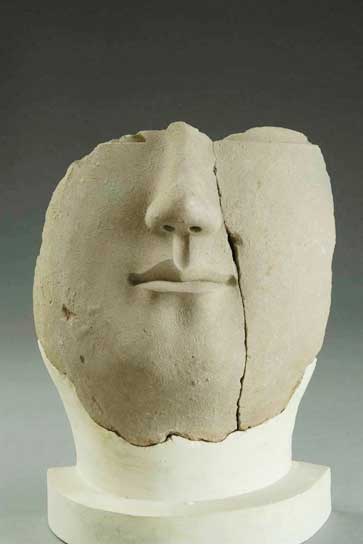Luoyang, one of China’s ancient capitals, is a city steeped in history and culture. Located in the Henan Province, it boasts an abundance of historical sites that provide a window into the country’s rich past. This journey will take you through some of the most significant landmarks in Luoyang, revealing the mysteries and stories behind them.
- Longmen Grottoes One of the most iconic and well-preserved examples of Buddhist rock carvings in China, the Longmen Grottoes are a testament to the craftsmanship and devotion of the artisans who created them. The site features over 100,000 statues and 2,300 caves, some of which date back to the Northern Wei Dynasty (386-534 AD). The largest statue, the Vairocana Buddha, stands at 17 meters tall and was carved during the Tang Dynasty (618-907 AD).
- White Horse Temple Regarded as the birthplace of Chinese Buddhism, the White Horse Temple was established in 68 AD during the Eastern Han Dynasty. Legend has it that the temple was named after the white horse that carried sacred Buddhist scriptures from India to China. The temple complex is a serene and peaceful place to explore, with beautiful gardens and numerous halls dedicated to different deities and figures from Buddhist history.
- Luoyang Museum The Luoyang Museum is a treasure trove of artifacts and relics, showcasing the rich history of the city and its former glory as a capital of multiple dynasties. The museum’s collection includes over 40,000 objects, including pottery, bronze ware, jade, and murals from the Eastern Zhou Dynasty (770-256 BC) to the Tang Dynasty. Among its most famous exhibits are the “Ding of King Li,” a large ceremonial bronze vessel, and the “Flying Horse of Gansu,” a bronze statue from the Eastern Han Dynasty.
- Guanlin Temple Dedicated to the revered general Guan Yu, the Guanlin Temple complex was built during the Ming Dynasty (1368-1644 AD) and expanded during the Qing Dynasty (1644-1911 AD). The temple is not only a place of worship but also the burial site of Guan Yu’s head, making it a significant pilgrimage site for devotees. The complex features halls, pavilions, and intricate wood carvings, as well as a large statue of Guan Yu.
- Luoyang Ancient Tombs Museum Located in the Mangshan Mountains, the Luoyang Ancient Tombs Museum showcases over 10,000 ancient tombs dating from the Han Dynasty (206 BC – 220 AD) to the Northern Song Dynasty (960-1127 AD). The museum offers a fascinating insight into ancient burial customs and the lives of the elite during these periods. Highlights include the tomb of General Zhang Xiong, featuring detailed murals depicting daily life and military campaigns, and the tomb of the Princess of Yongtai, which contains exquisite frescoes and artifacts.
- Emperor Guangwu’s Mausoleum (Dahuting Tomb) Situated in the city’s outskirts, Emperor Guangwu’s Mausoleum, also known as Dahuting Tomb, is the resting place of Emperor Guangwu, the founder of the Eastern Han Dynasty (25-220 AD). The tomb’s wall paintings are exceptionally well-preserved and showcase the artistic style and religious beliefs of the period. The site also features a small museum displaying artifacts discovered within the tomb, such as pottery figurines and bronze vessels.
- Lijing Gate Lijing Gate, or Lijingmen, is a massive ancient city gate that once served as the entrance to the old city of Luoyang. Constructed during the Sui Dynasty (581-618 AD), this architectural marvel has withstood the test of time and remains an imposing landmark. The gate is adorned with intricate stone carvings and features a small museum that offers a glimpse into the city’s past.
- Old Town of Luoyang (Luoyi Ancient City) The Old Town of Luoyang, also known as Luoyi Ancient City, provides visitors with a sense of the city’s former grandeur. Wander through the narrow streets and alleys lined with traditional architecture, shops, and teahouses. The Old Town also houses several temples, including the Xiangshan Temple and the Jiayuan Temple, which are worth visiting for their historical significance and serene atmosphere.
- Baiyun Mountain National Forest Park For a breath of fresh air and a break from the bustling city, head to Baiyun Mountain National Forest Park. Located about 30 kilometers from downtown Luoyang, the park is home to lush forests, cascading waterfalls, and picturesque hiking trails. It’s a great place to reconnect with nature and explore the region’s diverse flora and fauna.
- Peony Festival If you happen to visit Luoyang in April, you’re in for a treat: the annual Peony Festival. The city is famous for its peonies, which are considered the national flower of China. The festival features stunning peony displays in various parks and gardens throughout the city, as well as cultural performances and other events celebrating the flower’s beauty and cultural significance.
As you journey through Luoyang’s historic sites, you’ll not only gain a deeper understanding of the city’s past but also witness the endurance of China’s cultural heritage.
